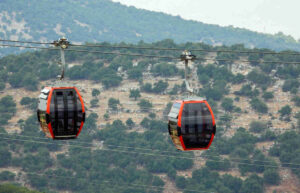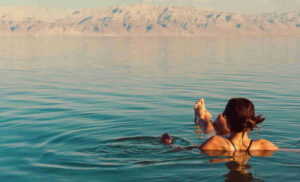The kufiya, also known as kefia, ħaṭṭah or ghutrah in Arabic, or simply Palestinian, is the famous checkered design scarf used in the Middle East. Therefore, it is easy to find kufiya in Jordan (where the term ħaṭṭah is usually preferred), as you will see during your trip. So we have decided to make a post with information about its use, symbolism and origins, which may interest you.
Origin of Kufiya
Although its use is widespread throughout the countries of the Middle East, its name gives away the place from which it comes: Kufa, a city in present-day Iraq. Its creation probably had a practical logic: its versatility allowed it to be used to cover the head as a turban, protecting it from the adversities of the desert: great sunshine, extreme cold on winter nights or sand from windstorms, in the latter case to cover the mouth and nostrils.
For this reason, it was a very common garment among the Bedouins and, in general, among peasants and inhabitants of rural areas. In fact, until well into the twentieth century, its use was a distinctive element of the humblest and most rural classes of Arab countries, in contrast to the inhabitants of the cities, where the tarbouche or fez was preferred.
What is kufiya like and how is it worn?
The kufiya is a large scarf with a square shape, although it is worn folded and, therefore, can take the form of a scarf or turban. Its ends have fringe-like finishes. The usual one is to attach the kufiya to the head by means of a cord or agal, denoting a plus of elegance in the wearer, who is usually a man. However, some women also choose to wear it, sometimes in the form of a veil.
It is usually made of cotton, although it is also common to find it in linen and, in less frequent cases, in wool. It is white and, on it, there is a design in the form of squares or diamonds, which resemble fishermen’s nets. This drawing is usually black, but it is also common to find it in red or even in other colors.
What does kufiya symbolize?
As we said, the origin of kufiya refers to the humblest layers of Middle Eastern society. And from the Arab revolts against British domination in the mid-twentieth century, it also became a symbol of resistance and identity, even among urban social strata, who ended up accepting it as well.
But without a doubt, its greatest popularity came with Palestinian claims, experiencing great worldwide fame thanks to leaders of the Palestinian National Authority, especially Fatah, such as Yasser Arafat, who never dispensed with this garment, not even at official events.
Therefore, for many people, its use translates into a gesture of solidarity and empathy with the Palestinian people, although it is not exclusive to Gaza and the West Bank. And it has nothing to do with extremism, despite the fact that some terrorist organisations have shown their members wearing this headscarf.
In the Western world, many people, especially young people, add it as a complement to their daily clothing, especially as a scarf to protect the neck. And on a few occasions, it has been used in fashion outfits, even haute couture.
However, kufiya in Jordan can be seen more often as a headgarment, for example in Bedouins on camelback, but also among tourists who want to protect themselves from the sun and cold in desert areas, such as Wadi Rum, where it becomes their best ally.



